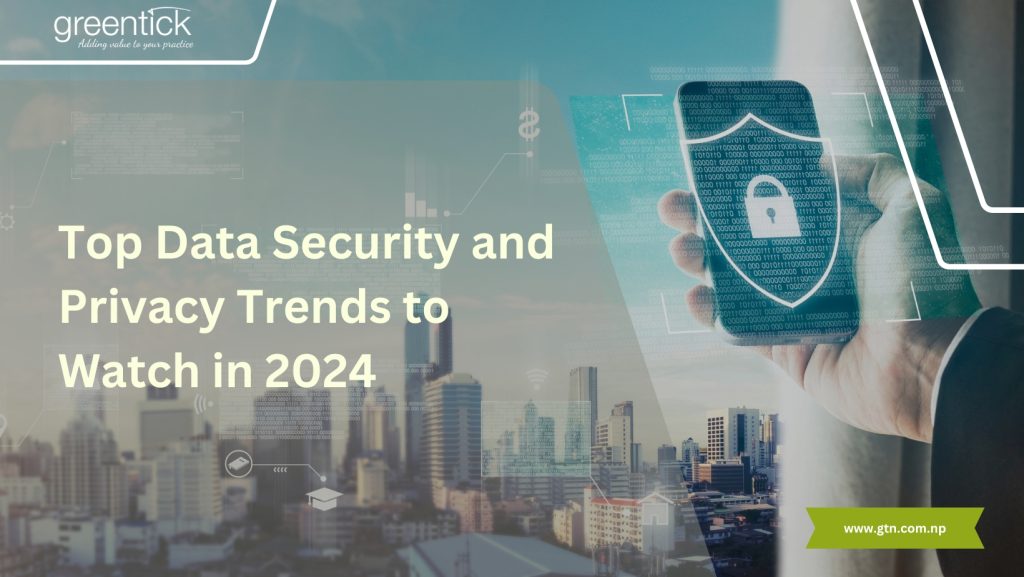
As we move into 2024, the importance of data security and privacy is more critical than ever. Cyber threats are becoming more advanced, and regulations are getting stricter. Businesses need to stay alert and proactive to protect their sensitive information. Here are the top trends in data security and privacy that you should keep an eye on this year.
- AI and Machine Learning in Cybersecurity
Artificial Intelligence (AI) and Machine Learning (ML) are changing the way we handle cybersecurity. These technologies help detect threats, predict weaknesses, and automate responses to cyber-attacks.
Better Threat Detection: AI and ML can analyze large amounts of data to find patterns and unusual activities that humans might miss, leading to faster detection of threats.
Predictive Analytics: By looking at past cyber-attacks, AI can predict future risks and suggest ways to prevent them.
Automated Response: AI can quickly isolate affected systems, block harmful activities, and start incident response actions, saving time and reducing damage. - Zero Trust Security Models
The Zero Trust security model is becoming more popular. It works on the idea of “never trust, always verify,” meaning every access request must be checked and approved, no matter where it comes from.
Continuous Verification: Every user and device must be verified each time they try to access resources.
Micro-Segmentation: Dividing the network into smaller parts to apply separate access controls for each part.
Least Privilege Access: Giving users the minimum access they need to do their jobs. - Quantum-Resistant Cryptography
Quantum computing poses a threat to traditional cryptographic methods. Quantum-resistant cryptography is being developed to protect data from future quantum attacks.
Switch to Quantum-Safe Algorithms: Businesses need to start using cryptographic methods that can resist quantum attacks.
Follow New Standards: Adhering to new guidelines set by organizations like the National Institute of Standards and Technology (NIST) for quantum-safe cryptography. - Cloud Security Evolution
As more businesses move to the cloud, securing cloud environments is a top priority. This includes fixing misconfigurations and preventing data leaks.
Cloud Security Posture Management (CSPM): Tools that help manage and improve the security of cloud environments.
Cloud Access Security Brokers (CASBs): Solutions that provide visibility and control over data and threats in cloud services. - IoT Security in the Era of 5G
The growth of Internet of Things (IoT) devices and the rollout of 5G networks bring new security challenges.
Better Security Standards: Creating and following strong security standards for IoT devices.
Network Security: Ensuring the security of 5G networks to protect connected IoT devices. - Ransomware and Double Extortion
Ransomware attacks are evolving, with attackers now using double extortion tactics—encrypting data and threatening to leak it if the ransom isn’t paid.
Proactive Defense: Implementing strong backup and recovery plans, educating employees about phishing, and using advanced security measures.
Incident Response Plans: Having a clear plan to quickly address and reduce the impact of ransomware attacks. - Data Privacy Regulations
Data privacy laws like GDPR, CCPA, and the upcoming Personal Data Protection Bill (PDPB) are becoming stricter.
Compliance Management: Ensuring your business follows data privacy laws to avoid fines and legal issues.
Data Governance: Implementing strong practices to manage data privacy and security effectively. - Supply Chain Security
Securing the supply chain is crucial to prevent and detect attacks targeting software and hardware components.
Better Visibility: Gaining a clear view of the supply chain to identify and reduce risks.
Strong Security Measures: Implementing strict security measures to protect against supply chain attacks. - Biometric and Behavioral Authentication
Biometric and behavioral authentication methods are becoming more common, offering strong security against unauthorized access.
Multi-Modal Authentication: Using multiple biometric factors (e.g., facial recognition, fingerprint scanning) for better security.
Behavioral Analytics: Analyzing user behavior to detect unusual activities and prevent fraud. - Persistent Remote Workforce Risks
The shift to remote work has introduced new cybersecurity challenges, with employees accessing corporate data from various locations.
Enhanced Training and Awareness: Educating employees on cybersecurity best practices and the importance of secure remote access.
Comprehensive Security Policies: Implementing and enforcing strong security policies for remote work environments.
Conclusion
Staying informed about these emerging trends in data security and privacy is crucial for protecting your business in 2024. By adopting proactive measures and using advanced technologies, you can safeguard your sensitive information and ensure compliance with evolving regulations. Don’t wait until it’s too late—start enhancing your data security and privacy practices today.
